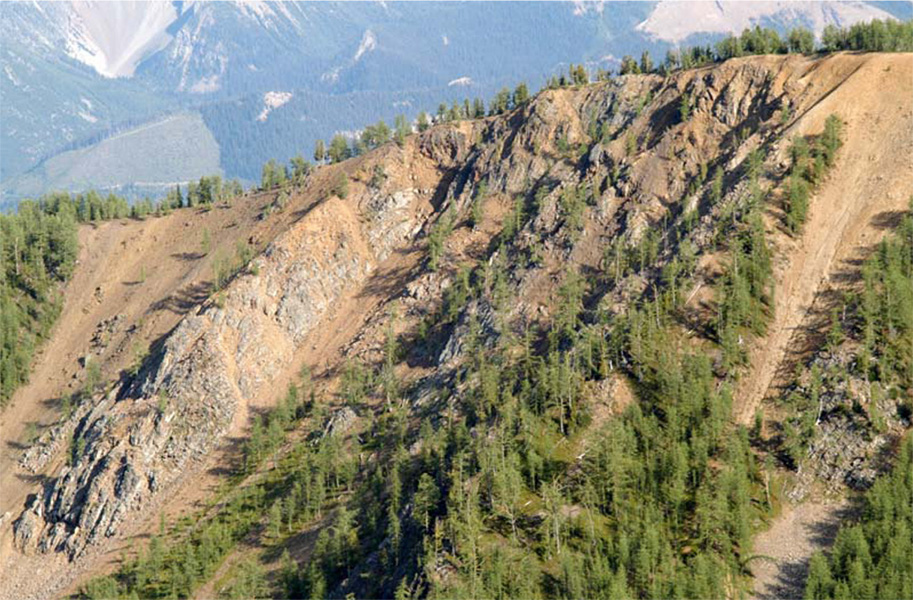PJX Resources samples 5.57% zinc at Dewdney Trail project, British Columbia

PJX Resources Inc. [TSXV-PJX; OTCQB-PJXRF] recently received results of significant zinc and lead mineralization in outcrop that further supports the potential to discover a Sullivan-type deposit on the company’s Dewdney Trail property in the Sullivan mining district in southeastern British Columbia, Canada.
Two rock samples taken from outcrop, G23-699B and G23-699C below, returned values of 5.57% zinc, 0.94% (9450ppm) lead, 4.41 g/t (4.41ppm) silver, and 4.72% zinc, 1.28% lead, 6.07 g/t (6.07ppm) silver, respectively.
The sediment hosted zinc and lead mineralization appears as bands or beds. The bedrock exposures of mineralization occur upslope and north of semi-massive to massive sulphide boulders containing Sullivan deposit style and grade mineralization announced in the news release dated October 12, 2023
Semi-massive to massive sulphide boulders occur in talus at the base of the mountain slope. Outcrop with sediment hosted zinc-lead-silver mineralization occurs up-slope and to the north of the boulders’ location.
Deposit Potential: Significant sediment hosted zinc and lead mineralization found in outcrop greatly increases the probability that the boulders of Sullivan grade semi-massive to massive sulphide mineralization found at the base of the mountain slope are close to their source.
The semi massive to massive sulphide boulders are strongly magnetic with iron, zinc and lead sulphides. The mineralized samples from outcrop have predominantly zinc and lead sulphides and are only very weakly magnetic. This suggests that the two styles of mineralization represent separate zones or horizons that could be stacked above one another or lateral to each other, similar to mineralization at the Sullivan deposit.
The semi-massive to massive sulphide boulders are also different in appearance. For example, some are banded/bedded or fragmental in nature. Others are iron sulphide rich while others are more zinc sulphide rich. These differences in mineralization styles also suggest that the various strongly magnetic and higher grade mineralized boulders may be from distinct and separate stacked horizons.
The strongly magnetic semi-massive to massive sulphide boulders occur at the base of the mountain slope and on the edge of a large (about 500m diameter) strong magnetic geophysical anomaly that occurs upslope from the boulders.
Zinc-lead-silver sulphide mineralization in outcrop is only very weakly magnetic. This supports the potential for a vertically or laterally zoned deposit with varying magnetic signatures. The outcrop mineralization appears to be associated with a less magnetic trend in the airborne geophysics survey that occurs for possibly 1.6 km along strike’
John Keating, President, commented: “Discovering Sullivan deposit style and grade mineralization in boulders that we announced in October was exciting. Now having discovered sediment hosted zinc-lead-silver mineralization in place, in outcrop, up-slope from the boulders is even more encouraging. Mineralization, geology, and geophysics all support the potential to discover a Sullivan type deposit. The next step will be to drill to explore for size and grade potential. Work is underway to do this when permit amendments are received and the snow melts.”
PJX’s primary properties are road accessible, close to power, rail, and located in the historical mining area of Cranbrook and Kimberley, British Columbia.
